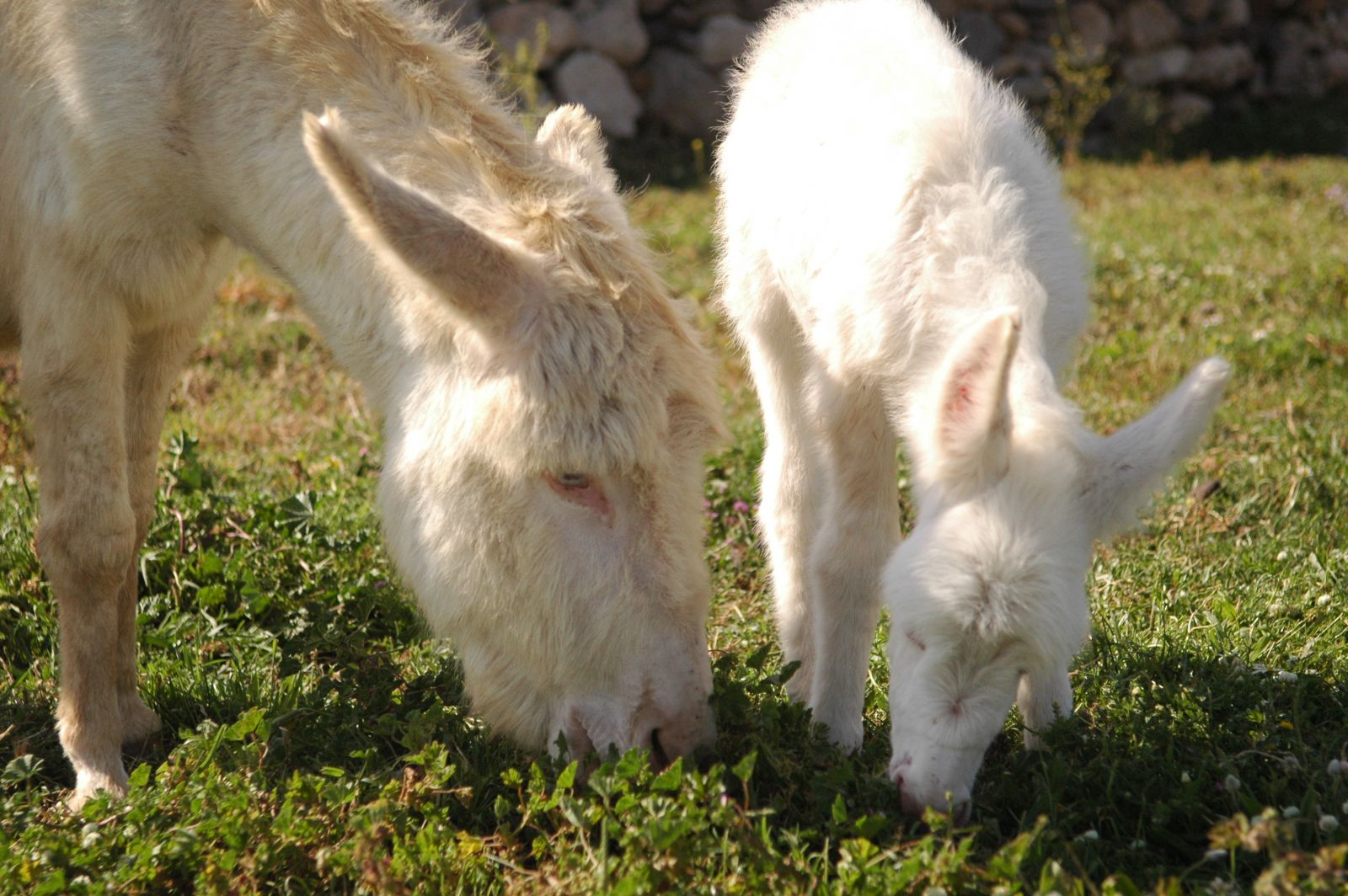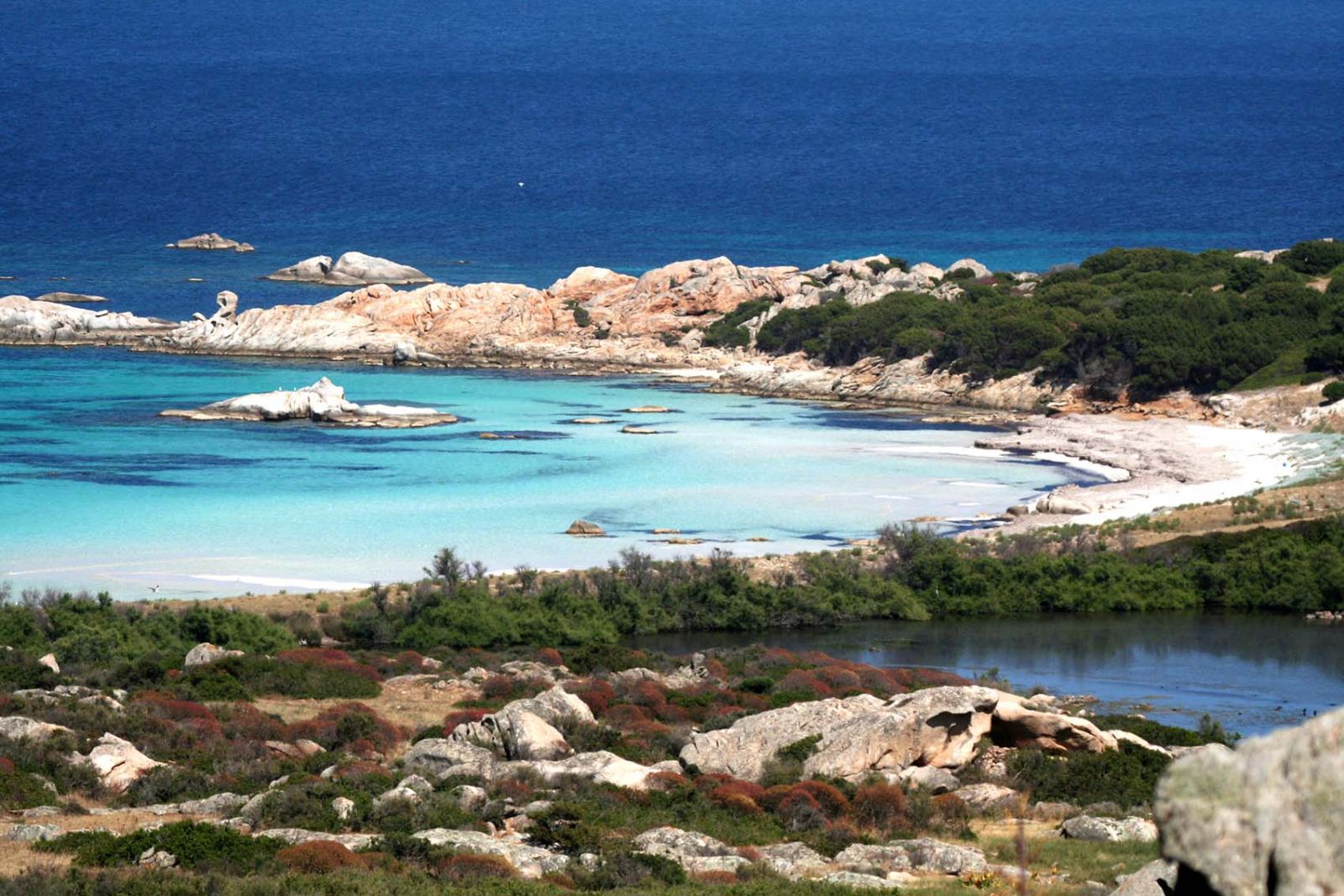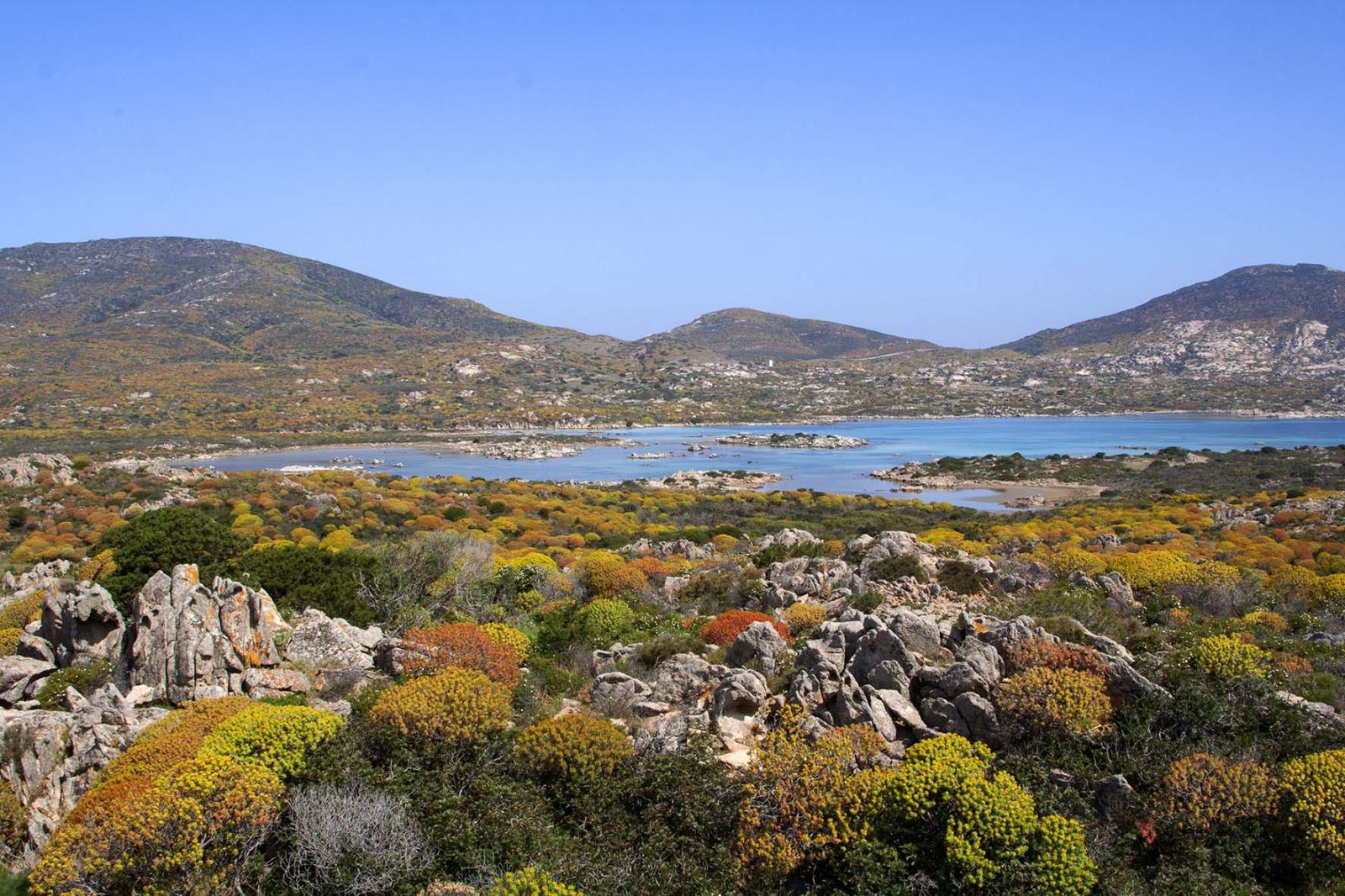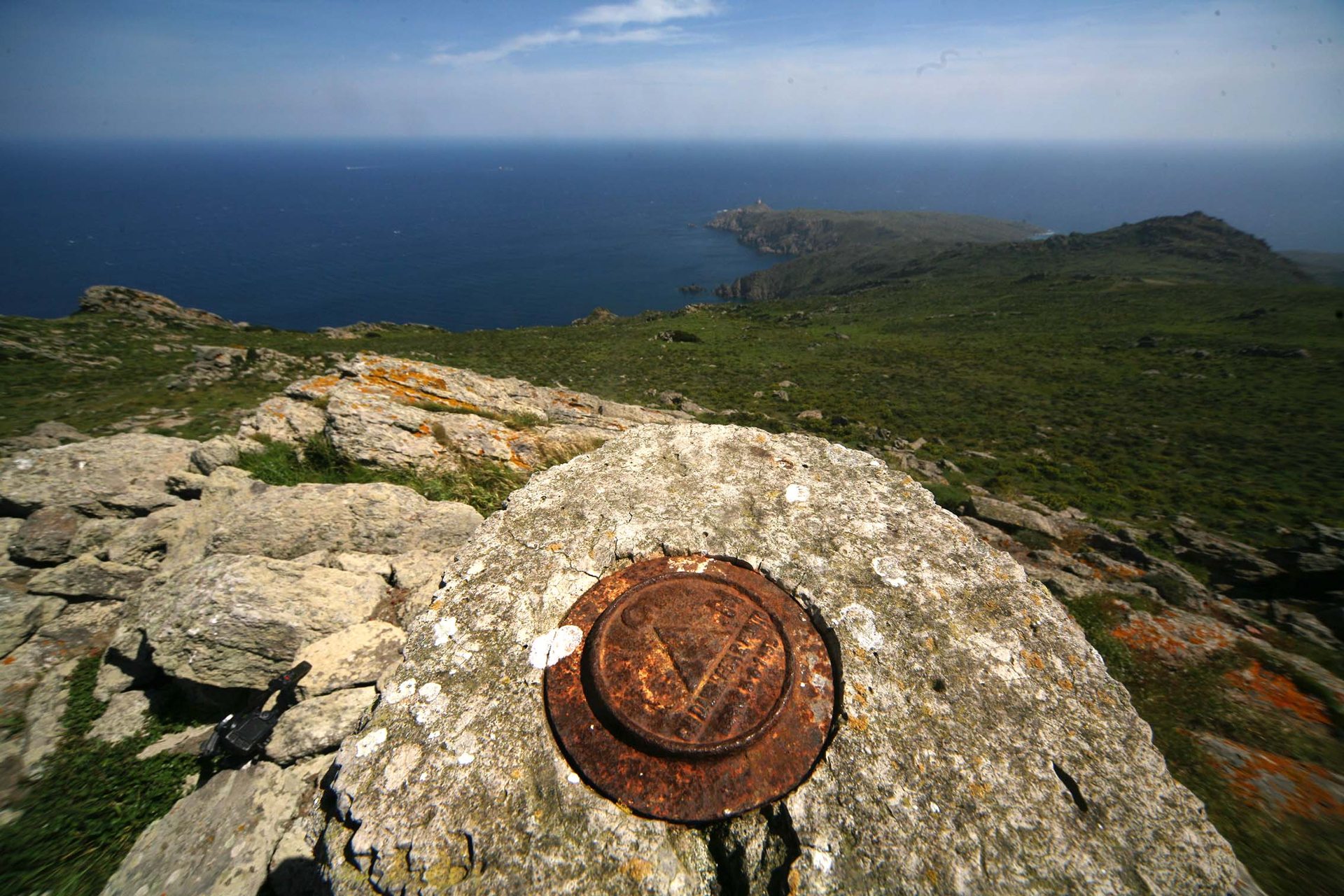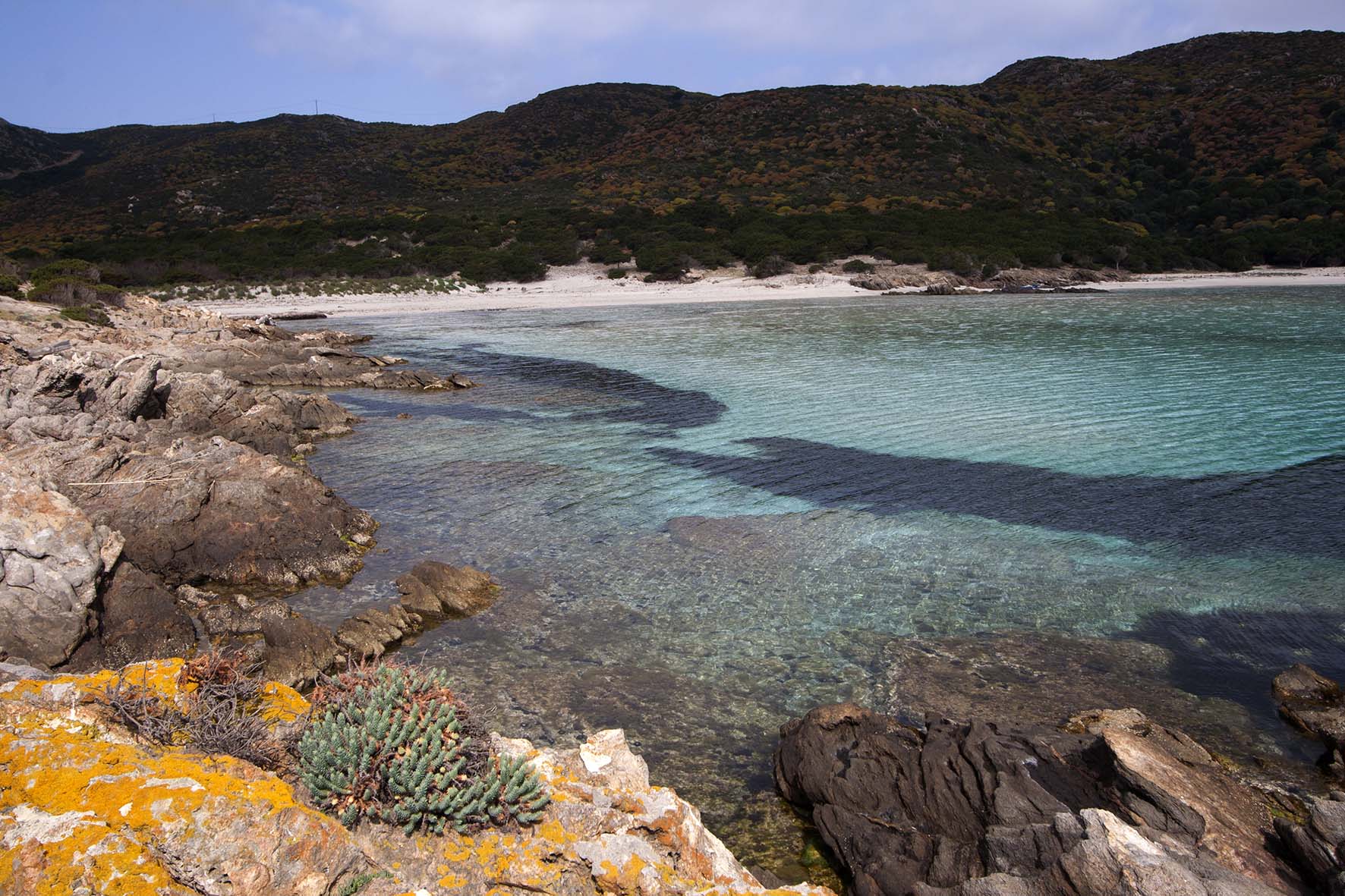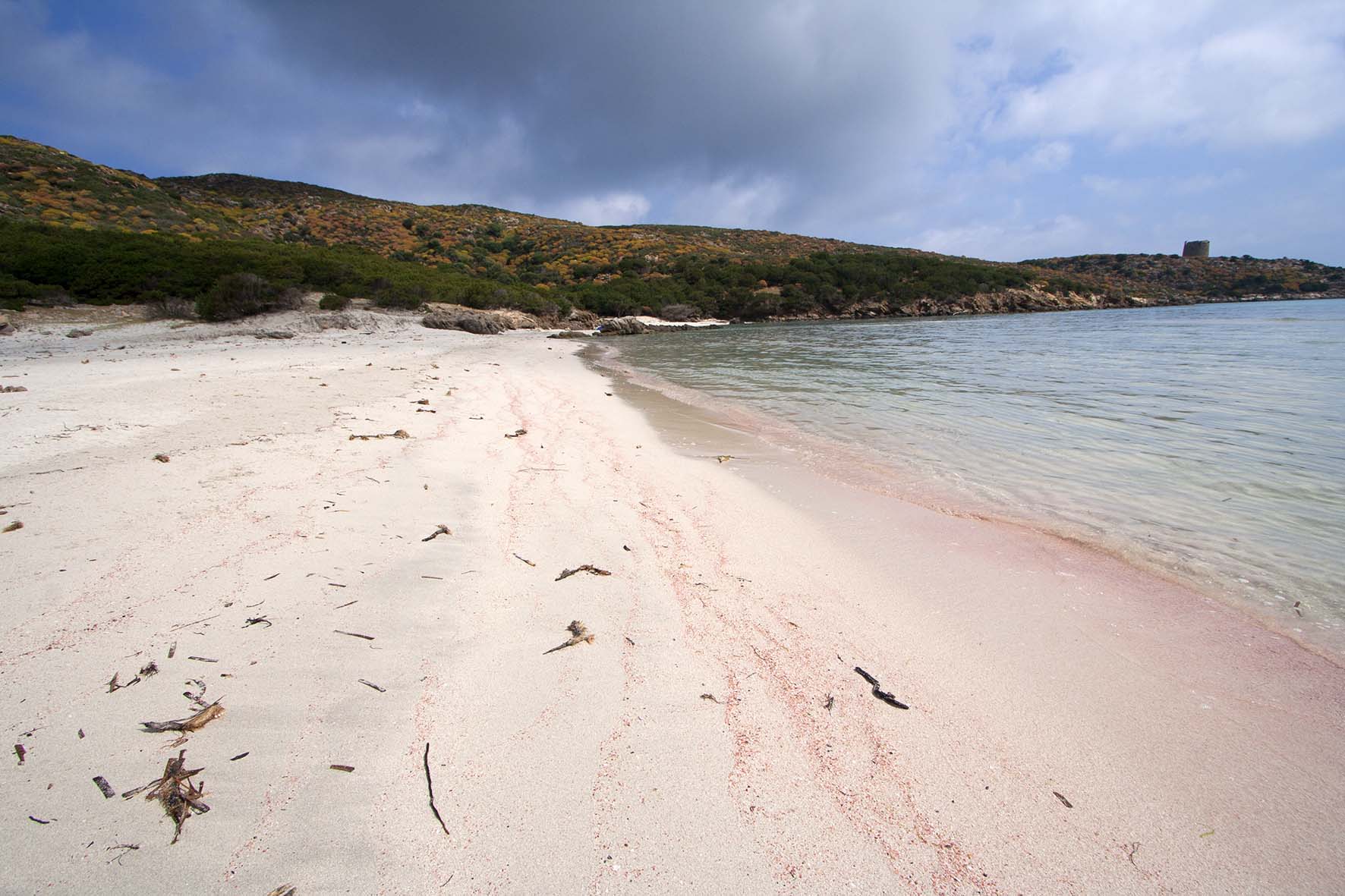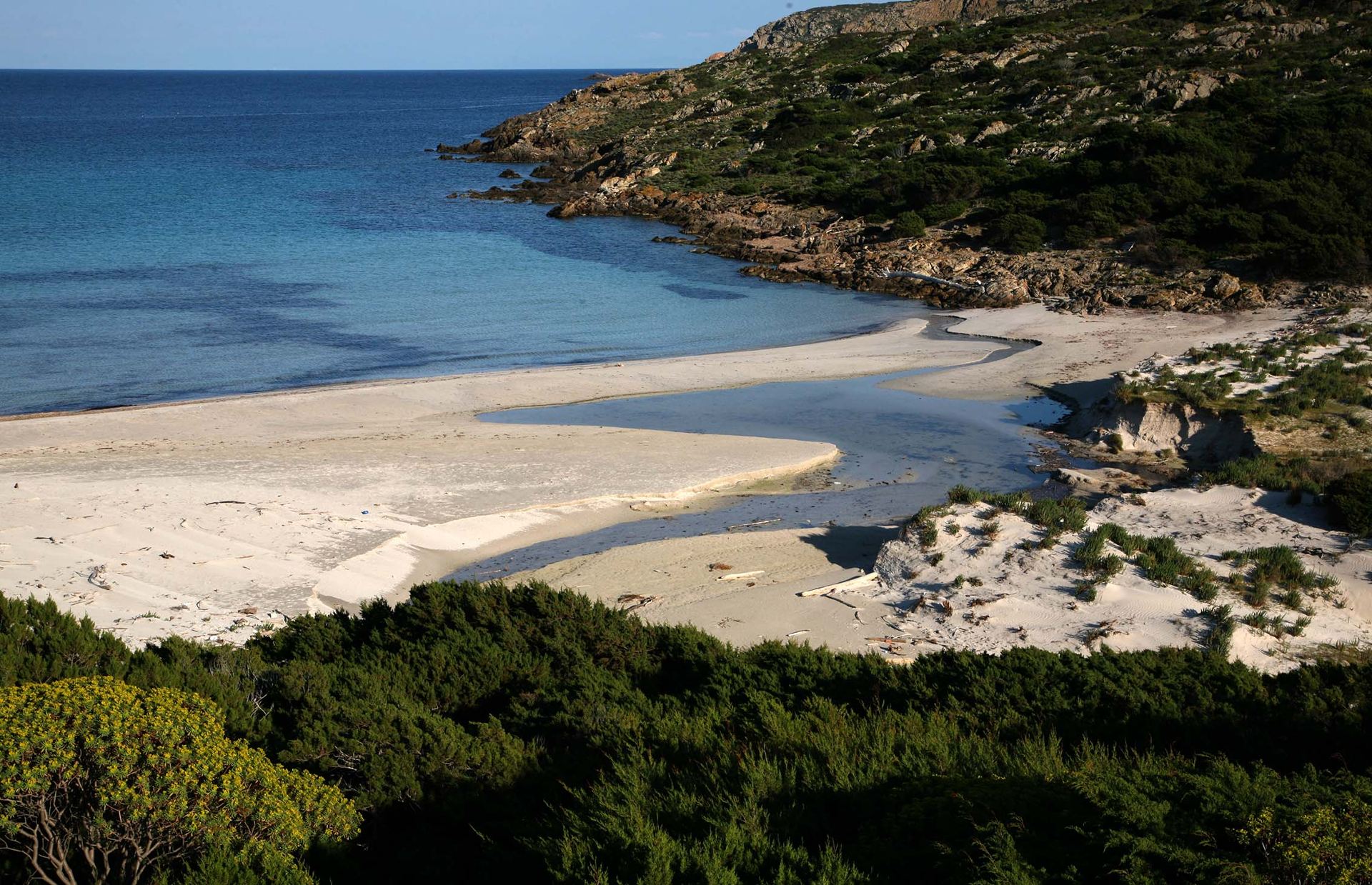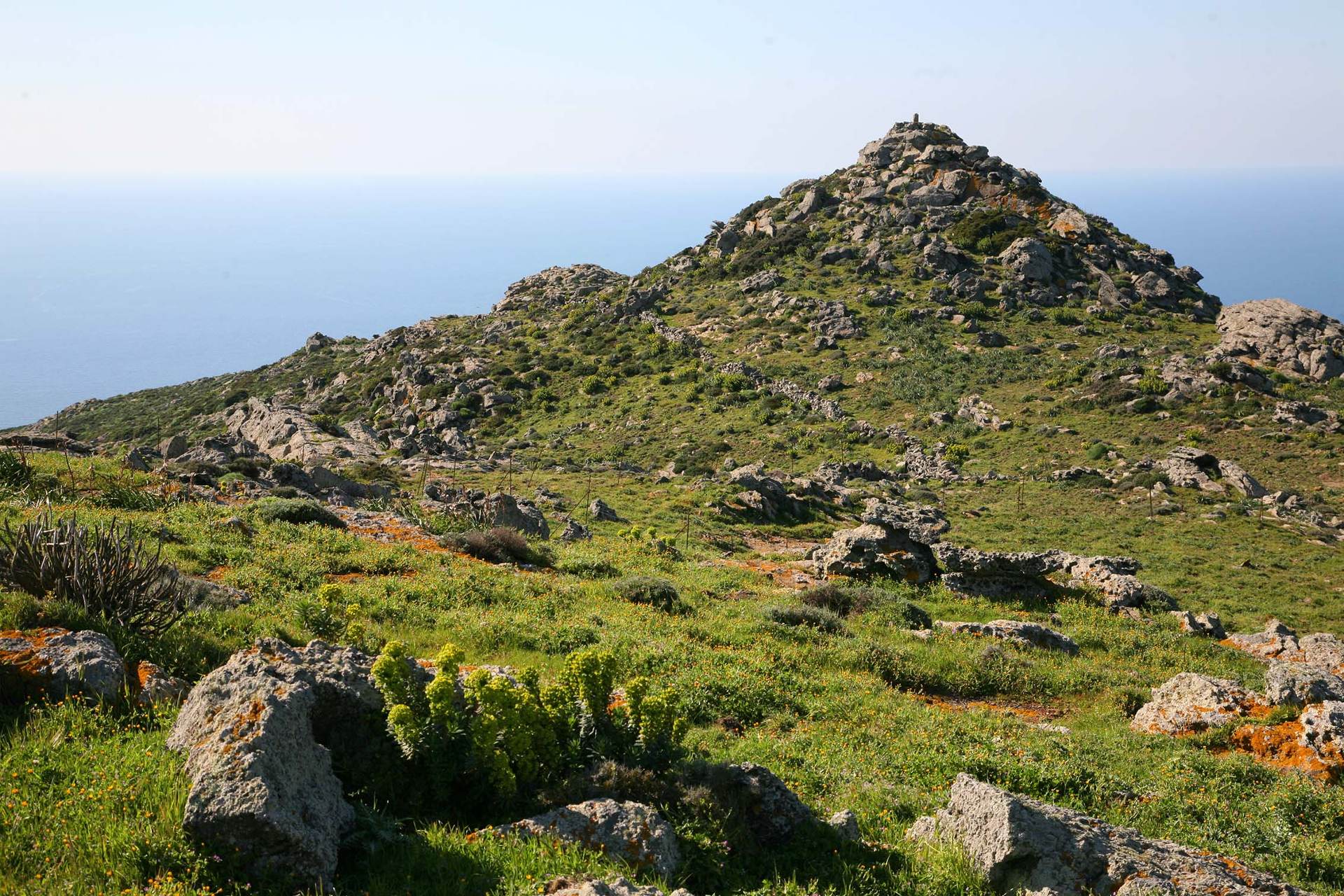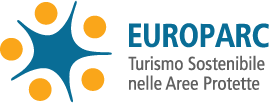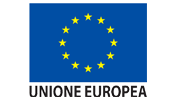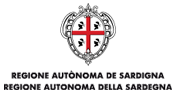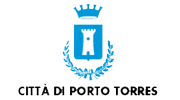Marine flora and fauna
For Asinara, the marine environment constitutes an element of particular value and scientific interest and is substantially characterized by a high integrity and diversity of floro-faunal communities, a remarkable landscape value, and excellent water quality in terms of ecology and chemical contamination.
The movements of the sea
Along the western side of the island, the surface circulation exhibits a marked seasonality: during winter the currents have a northeast to southwest direction and carry water masses from the west coast of Corsica, while in summer their motion is reversed. Within the Gulf of Asinara, the currents tend to move according to an hourly circulation that appears most pronounced in westerly winds, and to arrange themselves parallel to the coastline, particularly in the marine belt close to the shore. In the presence of southwesterly winds, the currents near the coast have a significant component in a direction perpendicular to it toward the open sea, resulting in vertical water movement of the deeper waters of the gulf.
The data collected by the Air Force over the course of 32 years from the station located near Punta Scorno, although referring to a period that is not recent, allow us to define a general picture of the state of the sea on the island of Asinara.
According to these data, the sea at Asinara is nearly calm on 20 percent of days and slightly rough one day out of two. However, for 25 percent of the days the sea à very rough. During the period between May and September, sea conditions appear more favorable for navigation (particularly in the summer months), while the winter months are characterized by more severe sea states.
By virtue of the considerable exposure to westerly and northwesterly winds, the seas on the western side and northern cape of the island occur more frequently in states that are not favorable for navigation. The eastern side of the island, facing the Gulf of Asinara, is more protected and accessible, here are located the landing points among which the Reale pier is the least exposed to easterly winds. At present, the marinas of Cala d’Oliva and Fornelli, although sheltered from westerly winds, suffer most from exposure to easterly and sirocco winds.
Within the gulf, based on maximum wave height data recorded by the oceanographic buoy located in the Gulf of Asinara at Porto Torres during June 2000 to April 2001, waves rarely exceed one meter.
Water quality
The waters surrounding the island of Asinara are generally of high quality, as indicated by the remarkable transparency and low concentrations of anthropogenic impact indicator compounds or elements, to which corresponds a remarkable integrity of biological communities.
In the summer period, the water column appears vertically stratified, with maximum temperature differences of about 6 °C and surface temperature reaching as high as 26 °C in August. In winter the opposite process takes place, with a water temperature of 17°C in December.
Similarly, salinity, which, however, has a more limited time range, increases its values in summer.
In summer, the value of dissolved oxygen in the water also increases: this enrichment is probably related to the metabolism of the posidonia prairie that can provide the system with a large supply in terms of oxygen, which due to summer thermal stratification remains more localized on the bottom.
The trophic state of the water, measured by the combination of some parameters (chlorophyll, dissolved oxygen, total phosphorus and dissolved inorganic nitrogen), indicates high water quality and absence of significant alterations.
The morphology of the seabed
The seabed on the two sides of the island has profoundly different characteristics.
The open sea side is characterized by slopes with considerable steepness that continue in the submerged part and rapidly sink more than 50 m even a short distance from the coast. Strong currents and considerable mistral wave action prevent the formation of significant sandy deposits and shape the coastline with ravines, gullies and rifts. A cave of significant size is located at Cala di Peppe, set at sea level at a depth of about 8 m and a height at the entrance of about 10 m.
The eastern side is generally characterized by low, mostly rocky and sometimes entirely sandy coastlines. The seabed toward the gulf, taking up the morphology of the emerged part, tends to slope gently to the typical average depth of the Gulf of Asinara, which is about 50 meters.
The area between Punta Scorno and Punta Sabina has intermediate characteristics between those typical of the two slopes. The sea floor appears uneven as a result of frequent outcropping of the rocky substrate.
In the area between Cala d’Oliva and Punta Trabuccato, and particularly in the Rada della Reale, the seabed is predominantly sandy and hosts extensive and intact Posidonia oceanica meadows. Further offshore, around the 50 m bathymetric, the substrate consists of sediment and organogenic detritus.
Class CONDROITTS and Class OSTEITTS.
APOGONIDAE
Apogon imberbis (mullet king or cardinalfish)
ATHERINIDAE
Atherina spp.
BALISTIDAE
Balistes capriscus (triggerfish)
BLENNIIDAE
Aidablennius sphynx (sphynx blenny)
Parablennius gattoruggine (rust blenny)
Parablennius incognitus (Mediterranean blenny)
Parablennius rouxi (white blenny)
Parablennius sanguinolentus (blood blenny)
Parablennius zvonimiri (bavosa cervina )
BOTHIDAE
Bothus podas (kidney turbot)
CARANGIDAE
Seriola dumerili (amberjack)
Trachinotus ovatus (starfish)
CENTRACANTHIDAE
Spicara flexuosa (menola)
Spicara maena (menola)
Spicara smaris (zerro)
CLINIDAE
Clinitrachus argentatus (seaweed bavosella)
CONGRIDAE
Conger conger (conger eel)
CORYPHAENIDAE
Coriphaena hippurus (cavallina coryphena or lampuga)
ENGRAULIDAE
Engraulis encrasicolus (anchovy or anchovies)
GOBIIDAE
Gobius bucchichi (raspy goby)
Gobius cobitis (big-headed goby)
Gobius cruentatus (redmouth goby )
Gobius paganellus (paganellus goby)
Gobiesoscidae
Lepadogaster spp.
LABRIDAE
Coris julis (damsel)
Labrus merula (blackbird thrush or blackwing)
Labrus viridis (marvizzo thrush or green thrush)
Labrus mixtus (whistle thrush)
Symphodus mediterraneus (redwing)
Symphodus melanocercus (black-tailed thrush)
Symphodus ocellatus (ocellated thrush)
Symphodus roissali (green thrush)
Symphodus tinca (peacock thrush)
Symphodus rostratus (musk thrush)
Symphodus cinereus (gray thrush)
Thalassoma pavo (peacock damsel)
MORONIDAE
Dicentrarchus labrax (sea bass)
MUGILIDAE
Liza aurata (golden mullet)
Mugil cephalus (mullet)
Oedalechilus labeo (Lobster mullet)
MULLIDAE
Mullus surmuletus (red mullet)
MURAENIDAE
Muraena helena (Mediterranean moray eel)
PHYCIDAE
Phycis phycis (white musdea)
POMACENTRIDAE
Chromis chromis (chestnut)
SCIAENIDAE
Sciaena umbra (corvina)
SCOMBRIDAE
Sarda sarda (bonito)
SCORPAENIDAE
Scorpaena notata (scorpionfish)
Scorpaena porcus (black scorpionfish or brown scorpionfish)
Scorpaena scrofa (red scorpionfish)
SERRANIDAE
Anthias anthias (red chestnut)
Epinephelus costae (golden grouper)
Epinephelus marginatus (brown grouper)
Serranus cabrilla (perchia)
Serranus scriba (sciarrano or serrano scribe)
SPARIDAE
Boops boops (boga)
Dentex dentex (snapper)
Diplodus annularis (sparlotto or sparaglione)
Diplodus puntazzo (sharpsnout bream)
Diplodus sargus (greater sargus)
Diplodus vulgaris (banded seabream)
Lithognathus mormyrus (murmora)
Oblada melanura (look)
Sarpa salpa (salpa)
Sparus aurata (sea bream)
Spondylosoma cantharus (cantara or tanuta)
SPHYRAENIDAE
Sphyraena sphyraena (pike)
Sphyraena viridensis (Mediterranean barracuda)
TRIPTERIYGIIDAE
Tripterygion tripteronotus (hot pepper)
Tripterygion delaisi (yellow chili pepper )
Tripterygion melanurus minor (chili minor)
DASYATIDAE
Dasyatis parsnip (trigon or common parsnip)
TORPEDINIDAE
Torpedo mormorata (marbled torpedo)


